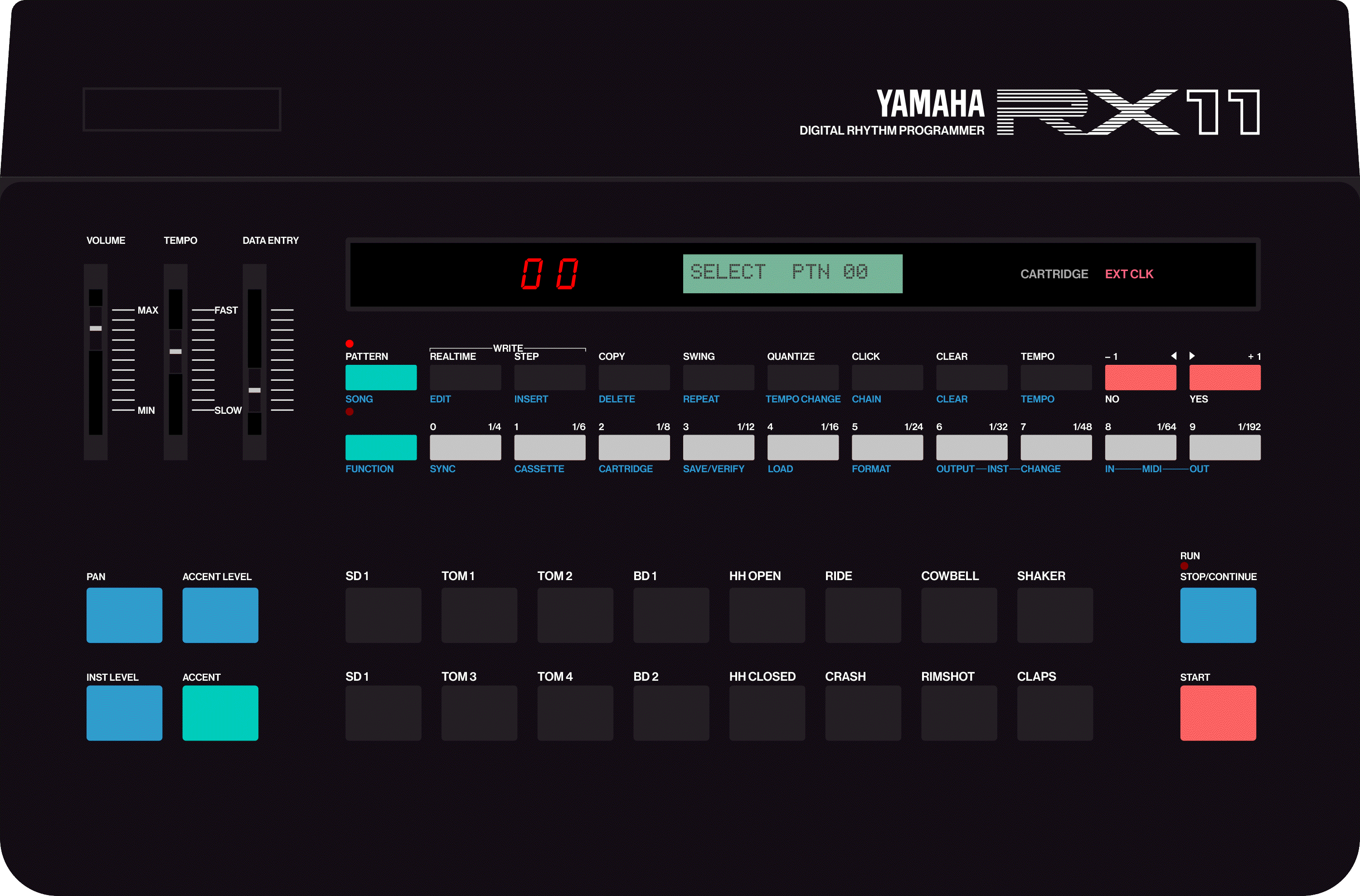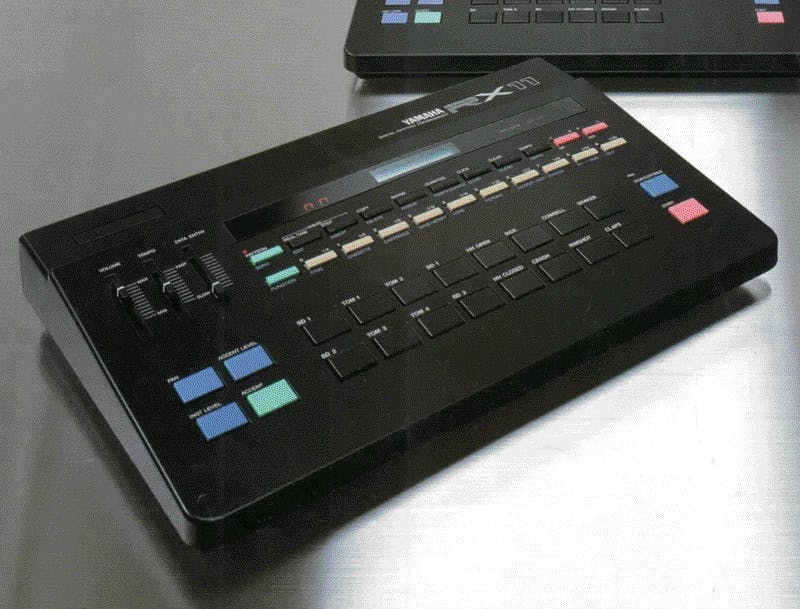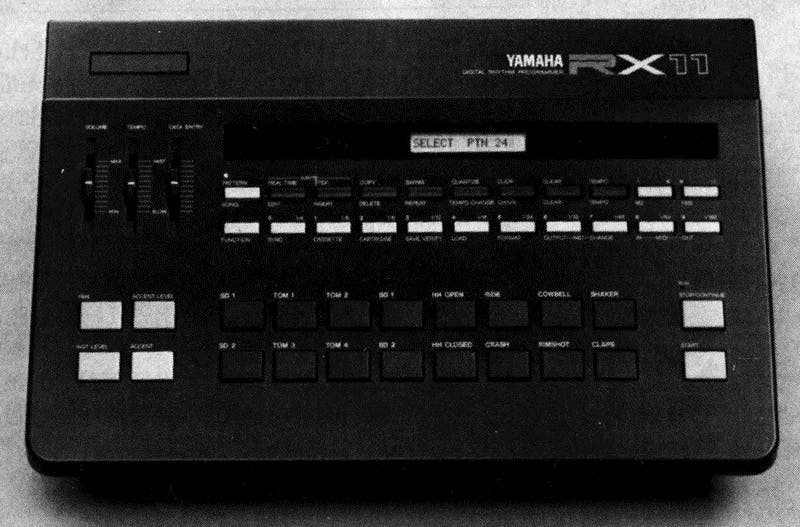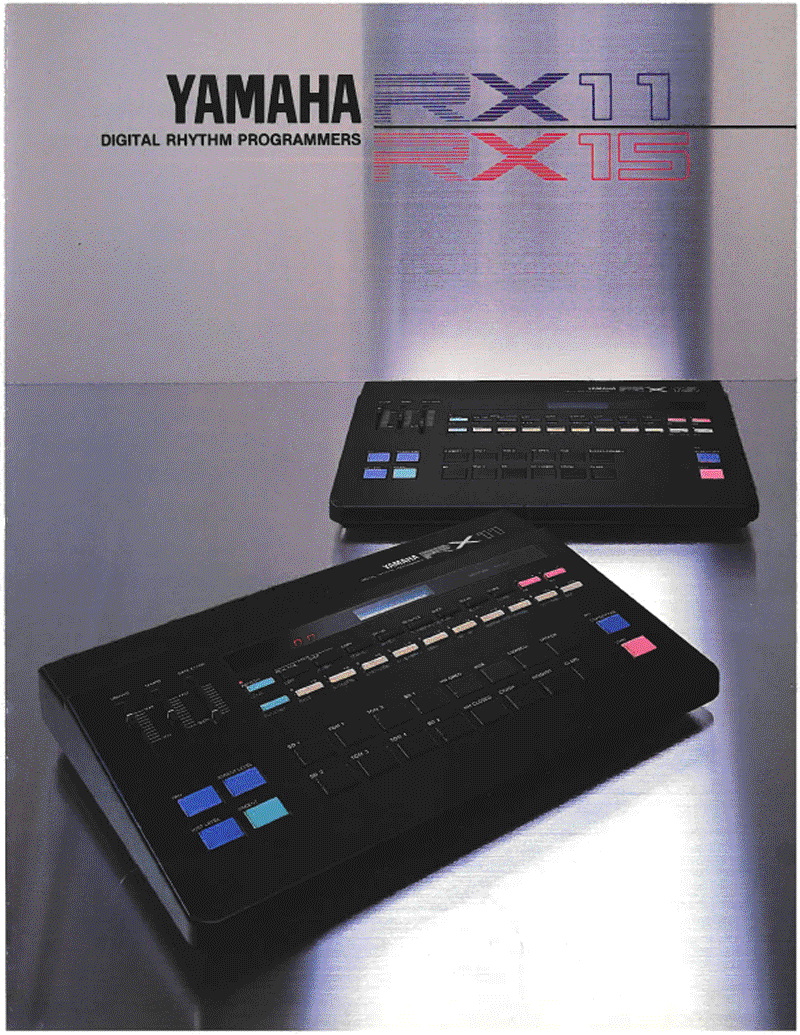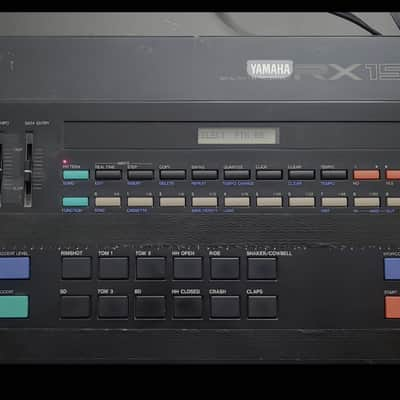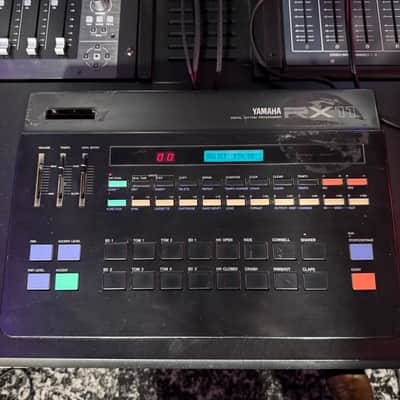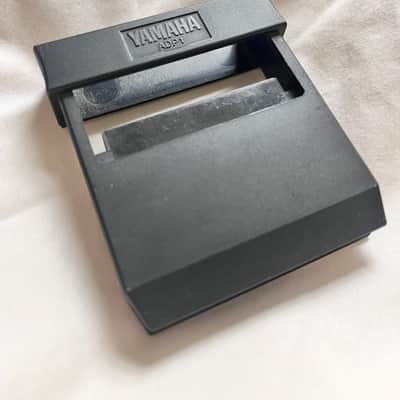1984 (July)
Initially sold for ¥137,000
Coming three years after the launch of the first digital drum machine by Linn (the LM-1 Drum Computer), Yamaha enters the market in early 1984 with a pair of very advanced devices for the time. The Yamaha RX11 and RX15 sport 12bit PCM sounds and standard MIDI implementation for far less than 1000$.
Construction and interface match the DX lineup, with a black glossy plastic chassis, non-retroilluminated liquid crystal display but most importantly buttons instead of membrane switches. At only 3Kg, the unit is very lightweight compared to other wood/metal machines of the time.
The RX11 holds 29 internal sounds stored in 6 ROMs of 256Kbit each. Generally speaking, the samples try to be as natural as possible: panned toms are great, bass and snare drums are warm and the cowbell is exactly what you’d expect from the Linn/Drumulator/707 era. On the other side, claps are very weak compared to the signature LinnDrum sound.
Individual jacks for each instrument are provided, together with stereo mix and phones outputs. Additionally, volume and panning can be set through the machine.
The memory holds 100 patterns, 10 songs, with around 2000 total “events”. A cassette port is provided to dump and retreive the whole memory, together with a cartridge slot that can be used with Yamaha RAM packs (series 1) to store patterns and songs in a more convenient way.
Note signals are sent and received over MIDI allowing any external device to control the full set of 29 sounds at once, altough they’ll miss specific voice information that can be programmed only through the RX11. The machine can be also synced to an external analog clock using the Tape IN socket.
